The Trip of Le Horla Lesson Summary Class 11 English
Students learn about the renowned French author Guy de Maupassant and his literary masterwork in the engaging lesson "The Trip of Le Horla," taught in English class for grade 11. This short story explores themes of psychological suspense, paranormal components, and the frailty of human sanity. Readers are taken on an exciting trip as they follow the protagonist's frightening experiences and dive into the dark recesses of his damaged mind. "The Trip of Le Horla" gives students a perceptive look into the complexities of the human condition and the power of narrative through its rich imagery and profound investigation of the human psyche.
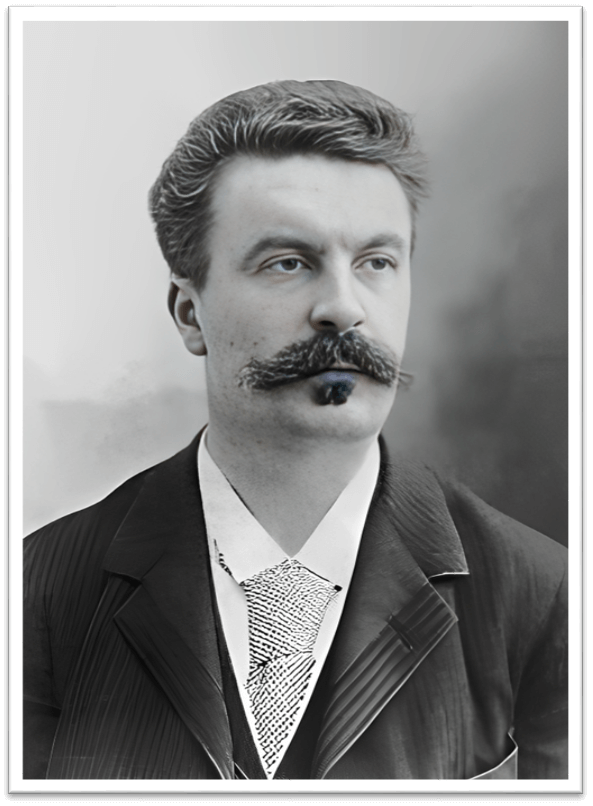
Overview of the Story:
- Guy de Maupassant's captivating short story "The Trip of Le Horla" centers on the spooky encounters the main character has. The protagonist, a wealthy guy, embarks on a journey to the Mediterranean at the novel's beginning to escape his disquiet and dread. But as the adventure continues, he is increasingly troubled by "Le Horla," a shadowy and malicious spirit.
- The main character is tormented by Le Horla, an invisible force that invades his thoughts, feelings, and sanity. The protagonist's mental state rapidly deteriorates, causing him to doubt his reality and fight against Le Horla's unrelenting oppression. The plot develops as a compelling tale of psychological suspense that blurs the lines between the supernatural and the protagonist's failing mental state.
- The value of "The Trip of Le Horla" resides in examining subjects like madness, loneliness, and the vulnerability of mental stability. Maupassant explores the complexity of the human mind and raises significant issues on the nature of reality and the limits of reason via the prism of the protagonist's terrifying experiences. The narrative provides important insights into the depths of human emotions and the strength of occult powers, acting as a warning about the potential darkness that may be present inside the human psyche.
- Additionally, "The Trip of Le Horla" demonstrates Maupassant's extraordinary storytelling abilities and ability to create an eerie atmosphere that enthralls readers. It is a prime example of his contribution to French literature and his talent for telling stories that stay with readers long after they have finished reading them. This narrative used as an English lesson for Class 11, encourages students to consider their conceptions of reality and the delicate balance of the human mind and enrich their literary knowledge.
The Author and His Contribution to French Literature:
- French author Guy de Maupassant was well-known for his contributions to literature. Maupassant, a well-known author of the 19th century, was born on August 5, 1850, in Normandy, France. He belonged to the Naturalism literary movement, which tried to portray life and society truthfully and unbiasedly.
- Precision, clarity, and attention to detail define Maupassant's writing style. Almost during his very brief career, he produced 300 short stories, making him a virtuoso of the genre. His writings frequently addressed human psychology, socioeconomic class, and the intricacies of interpersonal interactions.
- The ability of Maupassant to convey the difficulties and realities of daily life with startling realism was one of his most significant contributions to French literature. He was able to depict people and events that readers could identify with because of his acute observational skills and understanding of human nature.
- Maupassant's writings frequently explored the darker sides of human existence, which delved into issues like insanity, obsession, and the destructive powers that lurk inside people. He had a special gift for developing tension and evoking dread, as shown in tales like "The Trip of Le Horla."
- For his literary skill, Maupassant won praise from critics throughout his career. His writings significantly impacted other writers, such as Anton Chekhov and Henry James. Maupassant's short stories continue to be examined and respected for their rich imagery, psychological nuance, and astute societal critique.
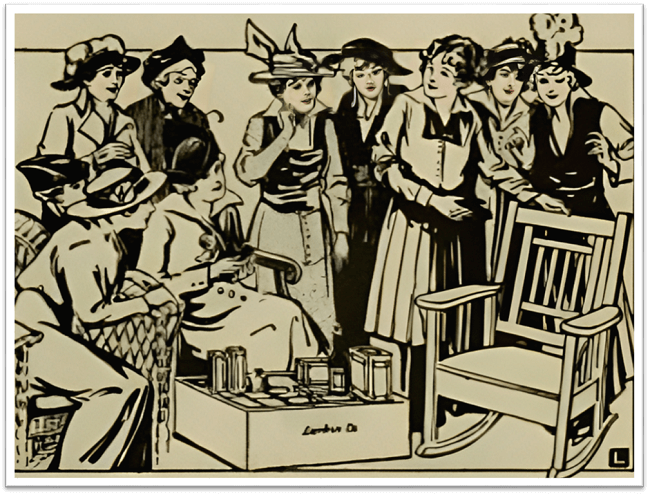
- Sadly, Maupassant's career ended early because of his deteriorating mental state. His physical and mental health was deteriorating as a result of his syphilis. A 42-year-old man, he died on July 6, 1893. Guy de Maupassant is still regarded as a major influence in French literature despite having a short career as a writer. He is also remembered for his powerful novels, which have impacted readers internationally.
Connection to Maupassant's Other Works:
- Guy de Maupassant wrote "The Trip of Le Horla" at the end of his career in the late 1880s. At this point, Maupassant had already made a name for himself as a renowned writer and was well known for his frank depictions of social problems and everyday life.
- It's critical to grasp the historical setting of "The Trip of Le Horla" to comprehend how it relates to Maupassant's other works. His declining mental condition hampered Maupassant's health during this time. He was battling the consequences of syphilis, a sexually transmitted condition that finally caused his untimely demise.
- Maupassant's deteriorating health during this time significantly impacted his writing. In his final works, themes of insanity, psychological distress, and the frailty of the human mind were frequently tackled. The protagonist of "The Trip of Le Horla" experiences a decline into madness and makes fruitless attempts to stave off Le Horla's torture, which might be read as a reflection of Maupassant's battles with mental illness.
- "The Trip of Le Horla" is connected to Maupassant's other stories in that it has similar aesthetic and thematic themes. Many of Maupassant's works explore the murky and frequently unexplored facets of human psychology. He frequently investigated the delicate boundary between sanity and crazy and how people deal with internal problems.
- Additionally, "The Trip of Le Horla" fits Maupassant's suspense and discomfort preference. The reader is continuously left guessing about the true nature of Le Horla and its effects on the protagonist's psyche, demonstrating the author's talent for creating tension and weaving complex plots.
- Overall, "The Trip of Le Horla" can be understood as the result of Maupassant's investigation into psychological topics and his own experiences with mental health. It stands as a potent monument to his prowess in penetrating the inner workings of the human mind and creating works that compel readers on both an academic and an emotional level.
A Synopsis of the Story's Plot:
- The anonymous protagonist of "The Trip of Le Horla" is a wealthy man traveling to the Mediterranean to escape his mounting anxiety. The unpleasant events he has on his journey are chronicled in this film. In the course of the narrative, "Le Horla," an ominous and implacable force, torments the main character more and more.
- The protagonist serves as the story's protagonist and narrator. He is depicted as a wealthy, intelligent man who initially seems calm and collected. But as the story goes on, his mental state worsens due to Le Horla's constant tyranny.
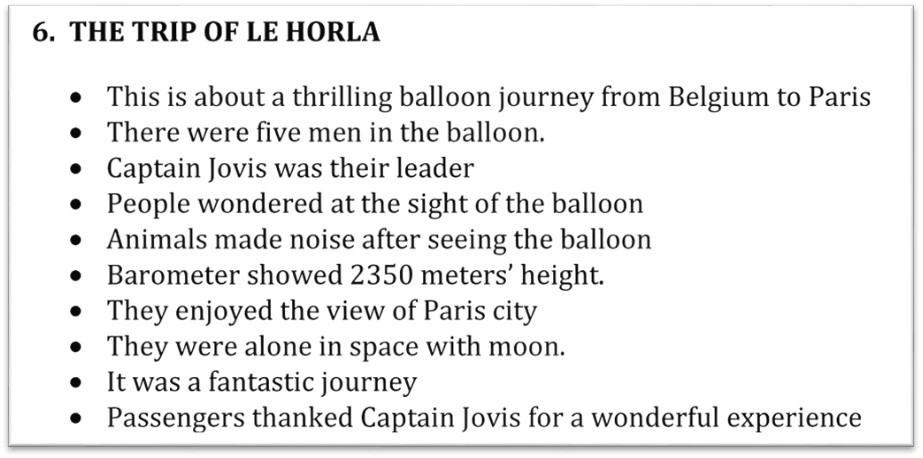
- The titular Le Horla slowly infiltrates the protagonist's consciousness. It begins with small interruptions, such as the protagonist detecting a presence close or an odd breeze. Over time, these interactions get more intense, which causes the protagonist to become increasingly skeptical about himself. Le Horla's exact nature is still unknown, blurring the distinction between paranormal events and the protagonist's worsening mental state.
- The protagonist's mental state quickly gets worse during the narrative. He develops an obsession with the spectral presence and grows more disturbed. Le Horla's influence over his thoughts and behaviors becomes something he starts to worry about, which accelerates his sanity-declining spiral.
- The plot develops through letters and journal entries that follow the protagonist's frantic attempts to flee Le Horla's grasp. He attempts various strategies to protect himself, such as capping his windows and getting medical attention. But despite his best efforts, Le Horla's suffocating power only grows stronger over him.
- The protagonist eventually experiences a breakdown in his mental state. As soon as he understands Le Horla is unconquerable, he gives in to the crushing lunacy. As the narrative comes to a horrifying end, the reader may be left wondering about Le Horla's actual character and how it will affect the protagonist's future.
- The unsettling investigation of the protagonist's inner conflict and the hazy distinctions between the otherworldly and the human psyche in "The Trip of Le Horla" is explored. It transports readers on a gripping journey inside the protagonist's disintegrating psyche and provides a provocative look at the frailty of human sanity.
Main Events and Conflicts:
Several disturbing incidents and conflicts drive "The Trip of Le Horla" ahead, enhancing the suspense and tension. These situations and confrontations cause the protagonist's increasing sense of discomfort and madness. Following are the major incidents and conflicts that influence the plot:
- The protagonist's departure: The protagonist, a wealthy guy, travels to the Mediterranean at the beginning of the novel to escape his growing discomfort. The events that will take place are put in motion by this departure.
- Encounters with Le Horla: The main character begins having unusual experiences as he travels, which he attributes to a sinister force known as Le Horla. These encounters begin gently, with the main character perceiving a presence close or an odd air. The protagonist's anxiety and paranoia grow as these encounters progressively worsen.
- The protagonist's deteriorating mental state: The protagonist's mental state quickly declines as the plot continues. Being convinced that Le Horla has power over his thoughts and deeds, he develops an escalating obsession with the being. He struggles inside to counteract Le Horla's influence while battling his eroding sanity, which leads to internal conflicts.
- Desperate attempts to defend against Le Horla: In a last-ditch effort to defend himself from Le Horla, the protagonist employs various techniques. He seals his windows to put up a wall against the invisible presence. He also gets medical care to discover a logical explanation for his experiences. His rational thinking and the mysterious occurrences he meets clash due to his endeavors.
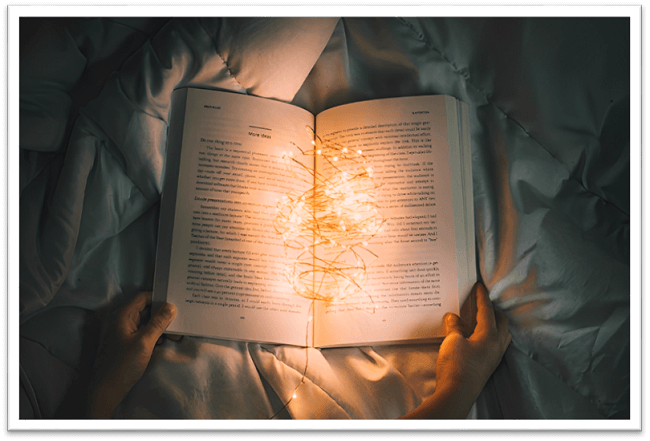
- The futility of resistance: Despite the protagonist's efforts, his defense against Le Horla is unsuccessful. His mind is becoming more and more under the entity's tyrannical control. This tension brings out the protagonist's realization that there could be no way out of the suffering he is going through.
- The protagonist's descent into madness: Conflicts culminate in the protagonist's spiral into madness as the novel comes to a close. He loses consciousness of reality due to giving in to Le Horla's powerful influence. The story depicts the tension between the protagonist's mental stability and the supernatural presence's unrelenting hold.
- Ambiguous conclusion: The narrative ends with a terrifying air of ambiguity, leaving the true nature of Le Horla and the protagonist's destiny up for debate. This unsolved tension contributes to the story's eerie mood.
These major conflicts and occurrences combine to provide a gripping and psychologically challenging story that propels the protagonist toward his ultimate showdown with his sanity and the mysterious Le Horla.
Themes and Motifs:
The psychological complexity and eerie mood of "The Trip of Le Horla" are enhanced by exploring several topics and ideas. These themes and ideas highlight the human condition, the frailty of the intellect, and the influence of the supernatural. The following are the story's main themes and motifs:
- Madness and Sanity: The investigation of insanity and sanity is a major element in the narrative. The protagonist's worsening mental state and his transformation into a lunatic while under the influence of Le Horla demonstrate how thin the line between sanity and crazy is. The tale poses doubts regarding the integrity of one's experience of reality and the influence of outside factors on the human mind.
- Supernatural and Unseen Forces: Le Horla's presence signifies the theme of paranormal and invisible powers. The invisible entity torments the protagonist throughout the novel, fusing supernatural and psychological occurrences. Readers are left to wonder about Le Horla's origins and degree of influence over the protagonist due to this motif's suspense and mystery-adding qualities.
- Isolation and Alienation: A feeling of estrangement and loneliness is produced by the protagonist's interactions with Le Horla. He withdraws from people and goes deeper into his disintegrating psyche as the presence consumes him more and more. This subject emphasizes the protagonist's quest to find connection and understanding in the face of his suffering and represents the severe effects of mental pain.
- The fragility of Human Sanity: The triptych "The Trip of Le Horla" explores the brittleness of human sanity. The narrative highlights how quickly an unseen power may destabilize a person's mind, causing them to lose control and spiral toward lunacy. This theme prompts the reader to consider the precarious balance between mental stability and vulnerability.
- Power of Perception and Reality: As the protagonist doubts the veracity of his experiences, the narrative tackles the themes of perception and reality. The protagonist's quest to determine the truth and the gray line separating the actual from the imagined emphasize how perception can shape reality.
- Psychological Suspense: The psychological suspense motif is a recurring theme throughout the story. To put readers on edge as they are dragged into the protagonist's progressively disturbed head, Maupassant expertly creates suspense and dread. The impact of the story's themes is heightened, and the atmospheric tension is increased through suspense.
"The Trip of Le Horla" challenges readers to consider the intricacies of the human mind, the power of invisible forces, and the delicate balance between sanity and madness through studying these topics and ideas.

Symbolism and Allegory:
To clarify its meaning and improve the reader's comprehension of the themes and psychological elements of the novel, "The Trip of Le Horla" employs symbolism and allegory. Guy de Maupassant uses numerous symbolic devices throughout the story. Here are a few noteworthy examples:
- Le Horla as a Symbol of Madness: Le Horla itself serves as the narrative's main symbol. It stands for insanity, the paranormal, and the destructive forces that can live inside a person's psyche. The entity is invisible, representing the ephemeral nature of mental illnesses and the elusiveness of sanity. The protagonist is gradually consumed by Le Horla, representing the tenacious power of mental disease.
- The Mediterranean Sea: The Mediterranean journey of the protagonist provides a symbolic setting. The sea's vastness and incomprehensible depths can be compared to the human psyche. The protagonist's trip reflects his plunge into his mind's recesses as he faces darkness.
- Windows and Barriers: The distinctions between the inside and external worlds are represented by windows and obstacles. The protagonist's failed attempts to stop Le Horla from entering his home are represented by his attempts to barricade and seal his windows. These images represent the fight to control one's thoughts and emotions, ultimately implying that unseen forces readily penetrate such defenses.
- Mirrors: Mirrors have symbolic meaning in the narrative, reflecting the protagonist's inner mind. The protagonist's increasing self-awareness throughout the story emphasizes his failing mental health and developing fixation with self-awareness. Mirrors stand for self-reflection, the shattered nature of identity, and the dual nature of vision.
- The Diary and Letters: Using letters and diaries as an allegorical method in the story allows readers to gain a close-up view of the protagonist's deteriorating mental state. The story examines how communication is constrained and how reality is subjective through these textual forms. Despite the inability to adequately express the depth of his suffering, the protagonist's diary and letters serve as a metaphor for his futile attempts to explain and describe his feelings.
These metaphors and symbolic themes furthered the investigation of madness, psychological distress, and the frailty of human sanity in the novel. They encourage readers to go beyond the story's literal events and interact with the deeper layers of meaning and psychological depth Maupassant infuses into his writing.
The Psychological and Philosophical Aspects:
"The Trip of Le Horla" dives into several psychological and philosophical facets, deeply analyzing the human soul and its weaknesses. The narrative explores the inner workings of the protagonist's mind while analyzing the subtleties of perception, the peril of sanity, and the unnerving impact of outside forces. The story's main psychological and philosophical themes are as follows:
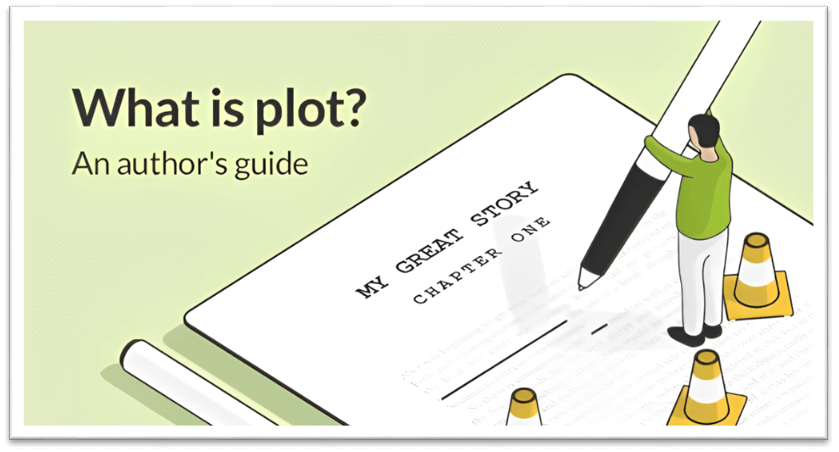
- The Fragility of Sanity: The story's depiction of the vulnerability of sanity is one of its key psychological elements. The protagonist's journey into madness serves as a reminder of how fragile the human mind is. It calls into question the accuracy of one's perceptions and the possibility that the subconscious could affect one's ideas and behavior. The plot highlights how quickly invisible, uncontrollable forces can upset the delicate balance of sanity.
- The Power of Perception: "The Trip of Le Horla" demonstrates how perception may influence reality. The protagonist begins to doubt his senses and sanity when his encounters with Le Horla cause the line between real and imagined to blur. The narrative examines the subjectivity of perception and argues that how we perceive and interpret the world significantly impacts how we understand it.
- The Nature of Evil and Madness: The moral implications of the tale center on the nature of evil and insanity. Le Horla is shown as an evil power that enters the protagonist's psyche and pushes him toward suicide. This makes one wonder about the roots of evil and whether or not people have a natural tendency towards evil. The story examines how outside factors can cause and aggravate internal unrest and blurring.
- Existentialism and Alienation: Existentialist themes are discussed in "The Trip of Le Horla," particularly the protagonist's solitude and alienation. He withdraws from social engagements and ponders the meaning of his existence as Le Horla consumes him more and more. The narrative invites readers to consider the protagonist's quest for meaning, the loneliness that permeates human existence, and the difficulty in forging relationships in the face of internal conflict.
- The Unconscious Mind and Repression: The narrative references the unconscious mind's influence and the consequences of suppressed impulses. Le Horla's presence expresses the protagonist's suppressed fears, anxieties, or wants. This begs the concern of whether the unconscious can impact conscious thought and behavior and the repercussions of denying or repressing particular facets of oneself.
In general, "The Trip of Le Horla" engages with psychological and philosophical issues that inspire readers to think about the complexity of the human mind, how perception affects reality, and the significant influence of internal and external influences on personal experience. It inspires reflection and elicits deep queries about the nature of sanity, the reality of evil, and the existential struggles people experience when experiencing psychological distress.
The Character Development and Their Relationships:
The protagonist's growth is shown in "The Trip of Le Horla" as he battles Le Horla's dominating presence and failing mental state. The story examines the protagonist's inner conflicts, social isolation, and relationships with others. An examination of the relationships and character growth in the narrative is given below:
- The Protagonist: The protagonist, who remains anonymous, serves as the story's main character and narrator. He is presented in the opening scenes as a calm, logical person who decides to travel to escape his mounting anxiety. But as the narrative progresses, the main character experiences a significant change. His decline into madness and the deterioration of his mental stability are fundamental to his character development. As the protagonist becomes devoured by Le Horla, his thoughts and actions become more and more irrational and obsessive. His character development examines the frailty of the human mind and the vulnerability of sanity.
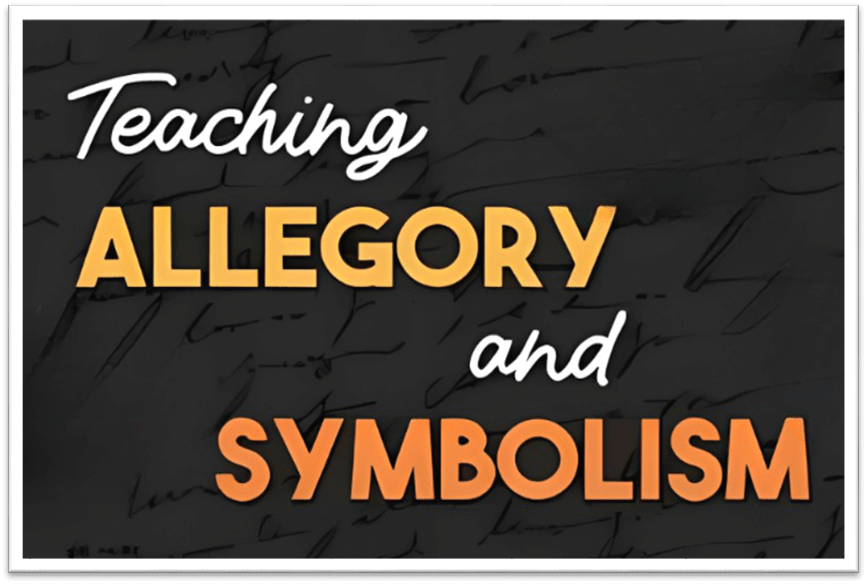
- Le Horla: Le Horla is not a fully realized character in the conventional sense, but its existence and impact on the protagonist are essential to the story. Le Horla is an evil power that creeps into the protagonist's mind. The protagonist's reaction to the creature shapes his development, driving him farther into lunacy and seclusion. Le Horla's enigmatic and evasive personality heightens the psychological elements of the story and heightens the suspense in the narrative.
- Relationships with Others: Isolation and an increasing sense of alienation characterize the protagonist's connections. He withdraws from social situations and finds it difficult to express his feelings as his mental health deteriorates. Friends, relatives, and healthcare providers who may have offered support or understanding become progressively less accessible to him. The breakdown of these connections heightens the protagonist's psychological struggles and loneliness.
The narrative's character growth and interpersonal relationships highlight the protagonist's psychological and emotional journey. As the story continues, the protagonist becomes increasingly alone and spirals out of control, underscoring the enormous effect of internal conflicts and outside factors on his mind. The absence of fully realized supporting characters emphasizes the protagonist's journey's isolation, highlighting the internal conflict and psychological topics discussed in the novel.
The Theme of Isolation and its Effects:
Isolation is a prominent theme in "The Trip of Le Horla" and has a lasting impact on the protagonist. The story shows the protagonist's growing estrangement from society and the serious harm of isolation to his mental and emotional health. Here is a discussion of the isolation topic and how it affects the main character:
- Social Alienation: The protagonist experiences greater social isolation as the plot develops. He begins isolating himself from friends, family, and the medical specialists who try to comprehend his illness due to his developing fixation with Le Horla. Internal and external circumstances cause the protagonist's seclusion as his mental health deteriorates and his obsession with Le Horla grows, such as the dread of judgment or disbelief.
- Emotional Disconnect: Because of his loneliness, the protagonist feels emotionally distant from others around him. He has difficulty expressing his feelings, which makes it challenging for others to empathize with him or provide help. The lack of deep emotional relationships makes his psychological troubles and sense of loneliness more difficult. The protagonist's increasing emotional distance reflects his declining mental health as his ideas and obsessions consume him.
- Psychological Impact: The protagonist's solitude has serious psychological repercussions. He becomes stuck inside his thoughts and descends further into paranoia and craziness without social contacts and support systems. He feels helpless, and the lack of outside opinions and reassurances worsens his psychological pain. As a result of the seclusion, his obsession with Le Horla grows and has a greater psychological impact.
- Descent into Madness: For the protagonist's madness spiral, isolation is a catalyst. He becomes increasingly caught in his delusions and obsessions without outside factors to anchor him in reality or provide alternate viewpoints. His warped sense of reality is made worse by the absence of social interaction and approval, which feeds his paranoia and hastens the deterioration of his mental health. The protagonist's internal conflicts are made more apparent by his seclusion, which has increased negative psychological and emotional impacts.
- Existential Angst: The solitude motif also examines the protagonist's existential distress. His solitude causes him to feel extremely lonely and alienated and wonder what his life's point and significance are. The protagonist comes to terms with his death and the inescapable loneliness of life due to the lack of meaningful connections and the overwhelming presence of Le Horla.

The isolation topic in "The Trip of Le Horla" demonstrates the significant negative effects of social and emotional withdrawal on the protagonist's mental and emotional health. The story emphasizes the negative effects of seclusion by illustrating how it exacerbates the protagonist's internal conflicts, hastens his decline into lunacy, and heightens his existential anxiety. Readers are encouraged to consider the value of interpersonal relationships, empathy, and support in preserving psychological stability and well-being while exploring isolation.
Conclusion:
In conclusion, Guy de Maupassant's "The Trip of Le Horla" is important to the Class 11 English curriculum. The narrative's examination of mental health, solitude, perception, and the search for meaning, is relevant to modern society and encourages critical thought and empathy. The story involves students studying literary devices and character analysis through its use of symbolism, allegory, and psychological depth. It supports the growth of analytical and writing abilities while provoking existential reflection. With its timeless relevance and cultural value, "The Trip of Le Horla" provides lessons and insights that benefit students' literary comprehension and personal development.
|




 For Videos Join Our Youtube Channel: Join Now
For Videos Join Our Youtube Channel: Join Now













